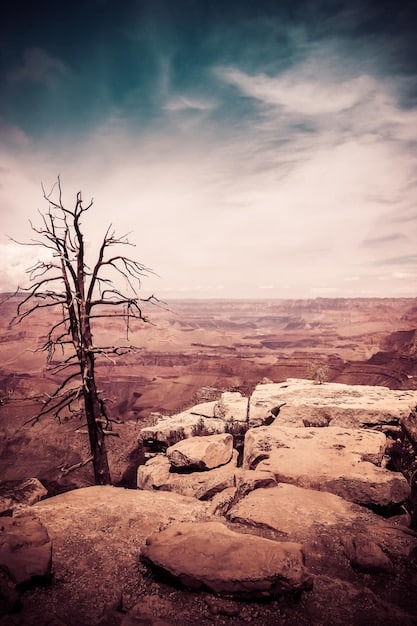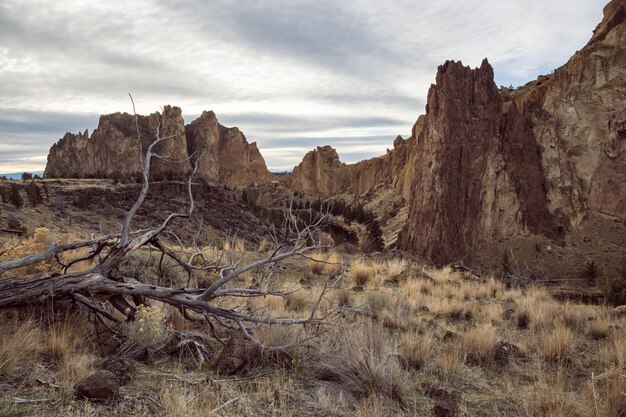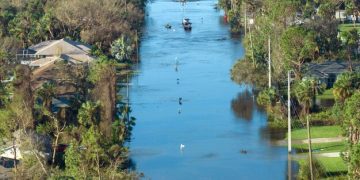Climate Change’s Impact on US National Parks & Protected Areas

The potential impacts of climate change on US national parks and protected areas encompass a wide array of ecological and operational challenges, threatening biodiversity, cultural resources, and the visitor experience through altered ecosystems, increased extreme weather events, and resource degradation.
As iconic symbols of nature’s majesty and America’s heritage, US national parks and protected areas face an unprecedented threat from a changing climate. Understanding what are the potential impacts of climate change on US national parks and protected areas is not merely an academic exercise; it’s crucial for their preservation, ensuring these cherished landscapes endure for future generations. These impacts span ecological shifts, threats to cultural resources, and operational challenges that redefine how we manage and experience these vital spaces.
Altered Ecosystems and Biodiversity Loss
The intricate tapestry of ecosystems within US national parks is highly sensitive to climatic shifts. Changes in temperature and precipitation patterns are already fundamentally altering the distribution and health of plant and animal species, leading to cascading effects throughout the food web.
One of the most visible impacts is the phenomenon of species migration. As temperatures rise, many species are compelled to move to higher elevations or latitudes in search of cooler climates and suitable habitats. This migration often outpaces the ability of some ecosystems to adapt, leading to ecological mismatches. For example, specific plant species that rely on a particular temperature range for flowering might no longer sync with the emergence of their insect pollinators, disrupting crucial life cycles.
Vegetation Shifts and Forest Health
Forests in parks like Yosemite and Glacier National Park are experiencing significant stress. Warmer temperatures extend dry seasons and increase the frequency and intensity of wildfires, directly impacting tree populations. Additionally, shifts in temperature allow for the proliferation of pests like the mountain pine beetle, which previously were kept in check by colder winters.
- Increased tree mortality, particularly in pine and spruce forests, due to pest outbreaks.
- Shift in forest composition as heat-tolerant species replace those less adapted to warming.
- Expansion of invasive plant species that are better suited to new climate conditions.
These changes are transforming the iconic landscapes we associate with these parks, potentially leading to a loss of historical forest types and the unique biodiversity they support. The long-term implications for carbon sequestration and water retention in these forest ecosystems are also a significant concern, exacerbating the cycle of climate change.
Impacts on Aquatic Ecosystems
Lakes, rivers, and streams within national parks are equally vulnerable. Warmer water temperatures reduce oxygen levels, threatening cold-water fish species like trout and salmon. Changes in snowpack and glacier melt also affect water availability and flow regimes, impacting riparian habitats and downstream communities.
- Reduced snowpack and earlier melt lead to lower stream flows during critical summer months.
- Increased water temperatures stress aquatic species and promote algal blooms.
- Changes in ice formation patterns disrupt seasonal habitats for migratory birds and mammals.
These aquatic alterations not only threaten the biodiversity of the parks but also impact recreational activities such as fishing and rafting, which many visitors come to enjoy. The integrity of these water systems is also vital for surrounding communities that rely on these natural water sources.
In essence, climate change is forcing a rapid reorganization of natural communities within our national parks. While some adaptation is natural, the speed and scale of current changes challenge the resilience of even the most robust ecosystems. Park managers are looking at strategies ranging from assisted migration to creating climate refugia to give species a fighting chance.

Escalating Extreme Weather Events and Geologic Impacts
Beyond gradual warming, climate change is increasing the frequency and intensity of extreme weather events, posing direct and immediate threats to national parks. These events include more severe wildfires, prolonged droughts, intense rainfall, and increased coastal flooding, each with distinct and damaging consequences.
Wildfires, a natural part of many forest ecosystems, are now burning hotter, faster, and across larger areas than historically observed. Extended periods of drought, coupled with higher temperatures, create ideal conditions for these mega-fires. Parks in the Western U.S., such as Yosemite and Sequoia National Park, have seen immense tracts of ancient forests consumed by flames, altering landscapes that have stood for centuries.
Wildfires and Their Aftermath
The immediate devastation of wildfires is obvious: destruction of vegetation, loss of wildlife, and significant air quality issues. However, the long-term impacts are equally concerning. Burned areas are more susceptible to erosion and landslides, especially when followed by intense rainfall. This can lead to further habitat destruction, pollution of water sources, and damage to park infrastructure.
- Increased risk of flash floods and mudslides in post-fire landscapes.
- Long-term degradation of soil quality and nutrient cycles.
- Threats to visitor safety and park employee operations during and after fire events.
The scale of these fires also strains firefighting resources and impacts local economies dependent on park tourism. Replanting efforts are complex, as managers must consider future climate conditions when selecting species to ensure long-term resilience.
Coastal Erosion and Sea Level Rise
For national parks situated along coastlines, sea level rise and increased storm surge frequencies are existential threats. Places like Everglades National Park in Florida and portions of Gateway National Recreation Area in New York are experiencing saltwater intrusion into freshwater ecosystems, reshaping coastal wetlands that are vital nurseries for marine life and natural buffers against storms.
- Loss of beaches, dunes, and coastal wetlands due to inundation and erosion.
- Threats to historic structures and cultural sites located near the coast.
- Alteration of estuarine habitats, impacting fisheries and bird populations.
Saltwater intrusion can kill off freshwater-dependent vegetation, turning productive ecosystems into barren mudflats. This fundamentally changes the character of these parks and diminishes their ecological value. Park managers are exploring strategies from living shorelines to managed retreat, but solutions are often complex and costly.
Geologic Formations and Thermal Features
While often seen as immutable, even geologic formations and thermal features can be indirectly affected. Changes in ice accumulation and melt patterns can exacerbate rockfall and landslide risks in mountainous parks. In places like Yellowstone, shifts in precipitation and subsurface water movement could potentially alter the flow and activity of geysers and hot springs, although direct links are still under study.
These escalating extreme events highlight the dynamic and unpredictable nature of climate change impacts on our national parks. Managers are increasingly focusing on building resilience and adapting infrastructure and management practices to withstand these more volatile conditions, ensuring the safety of visitors and the longevity of natural and cultural resources.
Threats to Cultural Resources and Historical Sites
The protection of US national parks extends beyond their natural beauty to encompass a rich tapestry of cultural resources and historical sites. These include ancient dwellings, archaeological dig sites, historic battlefield landscapes, and structures dating back centuries. Climate change poses a significant and often irreversible threat to these irreplaceable elements of human heritage.
Many cultural sites are inherently vulnerable due to their location or construction materials. Coastal archaeological sites, for instance, are at direct risk from sea-level rise, increased storm surges, and coastal erosion. Rising tides can inundate ancient settlements, dissolve fragile artifacts made of organic materials, and wash away vital evidence of past human activity, essentially erasing history.
Erosion and Deterioration of Structures
Inland, changes in precipitation patterns and temperature extremes contribute to the deterioration of historic buildings and archaeological features. More intense rainfall can lead to increased runoff, accelerating erosion of unpaved surfaces and exposing buried artifacts. Alternating freeze-thaw cycles, particularly in areas with permafrost or historical masonry structures, can cause cracking and structural instability.
- Accelerated erosion of unexcavated archaeological sites and trails.
- Damage to historic adobe structures from altered moisture regimes.
- Increased weathering of rock art and cliff dwellings due to extreme temperatures and moisture.
For example, ancestral Puebloan cliff dwellings in parks like Mesa Verde National Park, already fragile, face new pressures from changes in moisture and temperature, potentially impacting the stability of their ancient stone and mortar. The delicate balance that has preserved these sites for centuries is being disrupted, requiring new conservation approaches.
Vegetation Changes and Site Obscuration
Shifts in vegetation patterns can also indirectly threaten cultural resources. The expansion of invasive species or altered growth rates of native plants can obscure archaeological features, making them harder to locate, study, and maintain. Conversely, the loss of certain vegetation can expose sensitive sites to increased erosion or vandalism.
- Overgrowth of vegetation concealing historical earthworks or ruins.
- Increased exposure of delicate artifacts due to loss of protective plant cover.
- Challenges in managing landscape integrity around historic battlefields due to species shifts.
These subtle yet significant changes necessitate a proactive approach to cultural resource management. Park archaeologists and historians are working to document sites, stabilize vulnerable structures, and explore methods for protecting heritage in a rapidly changing environment. The loss of these cultural resources is not just a loss for the parks; it is a loss for collective human history.
Protecting these sites requires innovative strategies, including new monitoring technologies, partnerships with indigenous communities, and adaptive conservation techniques. The goal is to preserve the stories and lessons embedded in these landscapes, ensuring that future generations can connect with the rich human history interwoven with America’s natural wonders.
Operational Challenges and Management Strategies
The far-reaching impacts of climate change also present a myriad of operational and management challenges for US national parks. From maintaining infrastructure to ensuring visitor safety and managing increasingly complex ecosystems, park staff are on the front lines of adapting to a changing environment. These challenges demand innovative approaches, increased resources, and a shift in traditional management paradigms.
Infrastructure within parks, often built decades ago, was not designed for the extreme weather events and climatic conditions now being experienced. Roads, bridges, visitor centers, and utilities are vulnerable to damage from intense rainfall, flooding, wildfires, and coastal erosion. Repairing and retrofitting these structures is costly and complex, often disrupting park operations and visitor access.
Infrastructure Resilience
Park managers are increasingly focusing on building climate-resilient infrastructure. This involves not only repairing damaged facilities but also relocating at-risk structures, utilizing construction materials better suited to extreme conditions, and designing systems that can withstand future climate impacts. For example, roads in flood-prone areas might be elevated or rerouted, and coastal facilities might be moved further inland.
- Prioritizing repair and reconstruction projects to enhance flood and fire resistance.
- Implementing “managed retreat” strategies for highly vulnerable coastal assets.
- Investing in climate-adaptive building codes and engineering practices.
The vastness of many parks and the remote nature of some infrastructure make these tasks particularly challenging. Funding for these extensive upgrades often lags behind the accelerating rate of climate impact, putting park assets and operations at continued risk.
Visitor Experience and Safety
Climate change impacts directly affect the visitor experience and safety. More frequent heatwaves can lead to park closures or restrictions on outdoor activities. Increased wildfire smoke can reduce air quality and visibility, while extreme weather events can force evacuations or prevent access to popular areas. The very activities that draw millions to parks, such as hiking, camping, and wildlife viewing, are being altered.
- Development of early warning and evacuation systems for extreme weather events.
- Modification of peak season operations to account for heat or wildfire risk.
- Communication of climate-related risks to visitors through various channels.
Park staff also face challenges in search and rescue operations, which can become more dangerous and complex in an altered landscape with unpredictable weather. Educating visitors about these new realities and ensuring their safety while promoting an appreciative experience of nature is a delicate balance.
Resource Management and Adaptation
Beyond infrastructure, the management of natural and cultural resources requires a profound shift. Traditional conservation often focused on preserving ecosystems as they were. Now, the emphasis is increasingly on fostering resilience, assisting species migration, and actively adapting ecosystems to new conditions. This can involve radical interventions like planting drought-resistant native species or creating new habitat features.
- Developing climate change vulnerability assessments for all park resources.
- Implementing adaptive management plans that allow for flexible responses to changing conditions.
- Engaging in robust scientific research to inform effective conservation strategies.
These adaptation strategies often require cross-boundary collaboration with adjacent land managers, indigenous communities, and scientific institutions. The sheer scale of the challenge means that no single park can address these issues in isolation, highlighting the need for a coordinated, system-wide approach to climate change adaptation within the National Park System.
Impacts on Freshwater Resources and Water Quality
The availability and quality of freshwater are foundational to life within and around national parks, supporting diverse ecosystems, wildlife, and human communities. Climate change significantly threatens these vital resources, primarily through altered precipitation patterns, reduced snowpack, intensified droughts, and changes in water temperature and chemistry.
Many western US national parks, such as those in the Rocky Mountains and Sierra Nevada, depend heavily on snowpack as a natural reservoir. As temperatures rise, more precipitation falls as rain instead of snow, and existing snowpack melts earlier in the spring. This leads to reduced water availability during the critical summer and fall months when demand from ecosystems and human use is highest.
Diminished Snowpack and Runoff Patterns
The early melt and decreased volume of snowpack result in lower stream flows during late summer, stressing aquatic species adapted to cold, well-oxygenated water. This also impacts water supply for downstream agricultural and municipal users, creating potential conflicts over water resources that parks rely on to maintain ecological integrity.
- Reduced stream discharge and depletion of perennial streams to intermittent flows.
- Challenges for hydropower generation and recreational activities like rafting.
- Increased competition for scarce water resources between park needs and human demands.
The loss of glacier ice in parks like Glacier National Park is a stark visual example of these changes, signifying the long-term depletion of a critical water source that feeds numerous rivers and streams. While glaciers are receding naturally, climate change is accelerating this process to an unprecedented degree.
Water Temperature and Quality Degradation
Warmer air temperatures directly lead to warmer water temperatures in lakes, rivers, and streams. This has profound implications for aquatic life. Cold-water fish species, for example, struggle in warmer water due to lower dissolved oxygen levels and increased susceptibility to disease. Additionally, warmer temperatures can promote harmful algal blooms, further degrading water quality and making water unsafe for wildlife and human contact.
- Increased stress and mortality rates for aquatic species in warmer waters.
- Proliferation of toxic cyanobacteria (blue-green algae) in lakes and ponds.
- Challenges in managing invasive aquatic species that thrive in altered thermal regimes.
Intense rainfall events, which are predicted to become more common, can also lead to increased runoff and erosion, washing sediment and pollutants into park waterways. This degrades water clarity, smothers aquatic habitats, and can introduce contaminants that harm ecosystems and human health.
Saltwater Intrusion in Coastal Parks
For coastal parks like Everglades National Park and Gateway National Recreation Area, sea-level rise exacerbates saltwater intrusion into freshwater aquifers and surface waters. This process fundamentally alters the hydrology and ecology of these systems, converting freshwater marshes and forests into saline environments that cannot support the original species.
- Decline of freshwater-dependent plant and animal communities.
- Contamination of potable water sources for park operations and local communities.
- Loss of critical nursery habitats for both freshwater and marine species.
Managing freshwater resources in national parks under a changing climate is a complex task requiring integrated strategies, including water conservation, robust monitoring, and collaborative efforts with regional water management agencies. The long-term health of these parks and the services they provide are inextricably linked to the purity and availability of their water.
Socio-Economic Impacts and Community Engagement
The consequences of climate change on US national parks extend beyond ecological and operational spheres, leading to significant socio-economic impacts on gateway communities and challenging established frameworks of community engagement. These parks are not just natural landscapes; they are economic engines, cultural touchstones, and vital components of regional identities, making their vulnerability to climate change a broader societal concern.
Gateway communities, often small towns immediately adjacent to national parks, heavily rely on tourism generated by park visitors. Changes in park accessibility due to extreme weather, infrastructure damage, or altered visitor experiences can lead to substantial economic downturns. For instance, prolonged wildfire seasons can deter visitors, impacting local businesses from hotels and restaurants to outdoor gear retailers.
Tourism and Economic Dependency
The direct economic contribution of national parks through visitor spending is massive, supporting hundreds of thousands of jobs nationwide. When climate change impacts reduce visitation or shorten peak seasons, the ripple effect on these local economies can be devastating, leading to job losses and reduced tax revenues for public services.
- Decline in visitor numbers and associated tourism revenue due to climate impacts.
- Seasonal shifts in tourism patterns, requiring businesses to adapt operations.
- Increased costs for local communities due to park-related climate impacts, such as wildfire suppression support.
Furthermore, climate-induced changes in park ecosystems could diminish the very attractions that draw visitors. A park known for its glaciers might lose them, or one celebrated for lush forests might face widespread tree mortality, altering its appeal and the types of outdoor activities it can support.
Health and Well-being of Local Communities
Beyond economic impacts, the health and well-being of communities surrounding national parks are increasingly affected by climate change. Increased wildfire smoke leads to poor air quality, posing respiratory health risks. Flooding events can damage homes and infrastructure, displacing residents. These direct impacts can strain local emergency services and healthcare systems.
- Elevated public health risks from air pollution due to wildfires.
- Mental health impacts related to natural disasters and environmental change.
- Challenges for community infrastructure and emergency preparedness in the face of extreme events.
Many gateway communities are also grappling with rising insurance costs and the long-term uncertainty of living in areas increasingly vulnerable to climate-related hazards, adding another layer of socio-economic stress.
Engagement and Adaptation Strategies
Effective climate adaptation within national parks necessitates deeper engagement with local communities, indigenous groups, and diverse stakeholders. This involves sharing scientific information, collaborating on resilience planning, and ensuring that adaptation strategies consider both ecological integrity and community well-being. Indigenous communities, with their deep historical ties to these lands, often possess invaluable traditional ecological knowledge that can inform effective climate responses.
- Developing collaborative climate resilience plans with adjacent communities.
- Incorporating traditional ecological knowledge from indigenous partners into park management.
- Supporting local efforts to diversify economies and reduce reliance solely on park tourism.
These partnerships are crucial not only for the physical adaptation of the parks but also for building social resilience and fostering a collective understanding of the urgency and complexity of climate change. The future of national parks, and the communities that embrace them, will depend heavily on these integrated and empathetic approaches to an evolving environment.
| Key Impact Category | Brief Description |
|---|---|
| 🌳 Ecosystem Alteration | Species migration, vegetation shifts, and increased pest outbreaks redefine park landscapes. |
| 🔥 Extreme Weather | More frequent intense wildfires, severe droughts, and coastal flooding damage park resources. |
| 🏛️ Cultural Site Damage | Erosion, deterioration, and inundation threaten ancient dwellings and historical landmarks. |
| ⚙️ Operational Challenges | Infrastructure damage, visitor safety concerns, and complex resource management require new strategies. |
Frequently Asked Questions About Climate Change and US National Parks
▼
Direct observable impacts include receding glaciers in Glacier National Park, increased frequency and intensity of wildfires across Western parks, widespread tree mortality due to drought and pests, and saltwater intrusion in coastal parks like Everglades, visibly altering ecosystems and historical sites. These changes affect landscapes and species distributions.
▼
Species with specific habitat requirements, slow migratory abilities, or sensitivity to temperature changes are highly vulnerable. Examples include cold-water fish like trout in mountain streams, pikas in high-alpine environments, polar bears in Arctic coastal areas influenced by sea ice melt, and certain amphibian species sensitive to altered precipitation.
▼
Park managers are implementing adaptive strategies such as building climate-resilient infrastructure (e.g., elevated roads), actively managing ecosystems to foster resilience (e.g., assisted plant migration), developing early warning systems for natural disasters, and engaging in collaborative research with scientists and local communities to inform long-term planning.
▼
Yes, visitors can contribute by practicing Leave No Trace principles, supporting park Friends Groups, educating themselves on park-specific climate vulnerabilities, reducing their carbon footprint on travel, and participating in citizen science programs. Advocating for climate-friendly policies also has a broader impact on park protection efforts.
▼
Parks in the American West (e.g., Yosemite, Sequoia, Grand Canyon) face intensified wildfires and drought. Coastal parks (e.g., Everglades, Gateway National Recreation Area) struggle with sea-level rise and saltwater intrusion. High-elevation parks (e.g., Glacier, Rocky Mountain) are experiencing rapid glacial and snowpack melt. Arctic parks also face dramatic permafrost thaw.
Conclusion
The potential impacts of climate change on US national parks and protected areas are profound and multifaceted, challenging their ecological integrity, threatening cultural heritage, and complicating operational management. From shifting ecosystems and increased extreme weather events to the deterioration of historic sites and socio-economic pressures on gateway communities, these cherished landscapes face an urgent imperative to adapt. Addressing these challenges requires sustained scientific research, innovative management strategies, significant investment in resilient infrastructure, and robust partnerships across all levels of government, with local communities, and among diverse stakeholders. Ultimately, the long-term health and preservation of America’s national parks depend on a collective commitment to understanding these impacts and acting decisively to mitigate and adapt to a changing climate, ensuring these invaluable resources thrive for generations to come.





